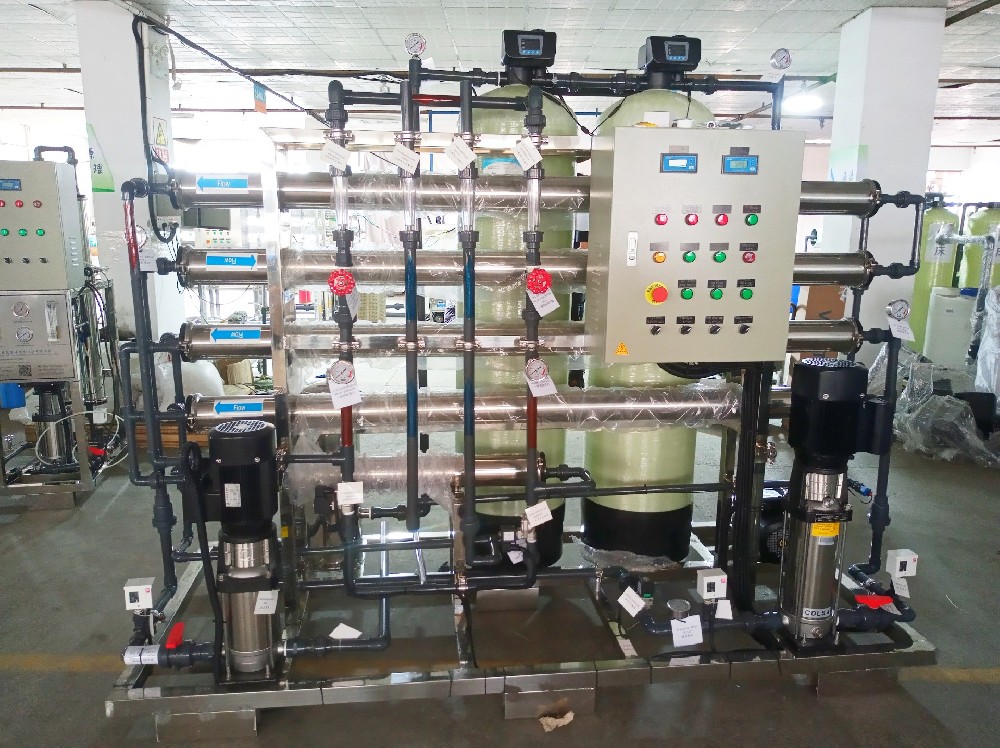
Wechat/Whatsapp:
+8613798883773

Wechat/Whatsapp:
+8613798883773
HYWATER Reverse Osmosis plant/system


How to treat Concentrate water from RO treatment plant In the process of producing pure water by reverse osmosis RO treatment plant, the concentrate water will be produced, which contains various organic and inorganic pollutants. If it is directly discharged, it may cause pollution to soil, surface water, ocean, etc. , too high total dissolved solids is also very detrimental to the growth of activated sludge. The highly concentrated RO concentrated water and chemicals introduced by cleaning agents and scale inhibitors are directly discharged into the environment, which will inevitably have adverse effects. Therefore, finding a cost-effective concentrated water treatment method is of great significance to protecting the environment. RO treatment plant has the advantages of no phase change of materials, low relative energy consumption, good demineralization effect, mature and reliable treatment process, simple equipment, high degree of automation, easy operation and management, etc. In recent years, it has been widely used in many industries. Wide range of applications. However, the general design recovery rate of the current RO treatment plant is 50-75%; if the raw water is underground brackish water with very poor water quality, or seawater, the amount of concentrated water will be larger, maybe only 30-50%. At present, the concentrated water produced by many reverse osmosis processes is directly discharged without treatment, causing waste of water resources and energy, and at the same time causing pollution to the surrounding environment. Concentrate water treatment for Discharge 1) To discharge separately The main problem of reverse osmosis concentrated water is the high content of calcium and magnesium plasma and high hardness. Generally speaking, standard discharge can be achieved after a simple softening treatment. Softening mainly adopts the method of adding lime, soda ash and other alkaline substances, using them to react with calcium and magnesium and other substances in concentrated water to form carbonate precipitation, which is removed from the water body to reduce the hardness of concentrated water and reduce its impact on the environment. 2) Mixed with other wastewater for common treatment For the vast majority of production enterprises, in addition to the reverse osmosis concentrated water produced in the water production workshop, various other wastewaters will also be produced. For example, the production wastewater discharged from the production workshop, the domestic wastewater in the factory area, etc. It is often not economical to treat each type of wastewater separately. Therefore, most enterprises choose to divert some special wastewater and mix various types of wastewater for treatment together. The water quality of reverse osmosis concentrated water is high in hardness and high in salt content, while important pollution indicators such as turbidity and COD are very low. Mixing the reverse osmosis concentrated water into other wastewater can play a certain role in dilution and regulation, thereby reducing the influent pollution load of the mixed wastewater treatment system. The production wastewater of some enterprises contains a large amount of alkaline substances such as sodium carbonate and sodium hydroxide, which can react with calcium and magnesium in reverse osmosis concentrated water to form hydroxide or carbonate precipitation and reduce water hardness. Concentrate water treatment for Deduction in flow 1) Increase the length of the reverse osmosis membrane module through which the water flows. While the water flow is flowing in the reverse osmosis membrane element, the fresh water continuously permeates the membrane to realize the separation of concentrated water and fresh water. Theoretically, the longer the membrane element that water flows through, the greater the production of fresh water and the higher the recovery rate. Due to problems such as convenience and standardization, the length specifications of various membrane elements on the market have been determined, but membrane modules can be connected in series according to process requirements. However, due to the decreasing flow and pressure, the membrane module cannot be too long, and needs to be segmented, that is, the series connection of multiple membrane modules. Therefore, under the premise of ensuring the quality of the effluent and the stability of the system, in order to reduce the production of concentrated water and improve the recovery rate of the system, the number of stages can be appropriately increased in the design of RO treatment plant. But in contrast, the lengthening of the membrane system needs to increase the driving force of the membrane, that is, the power of the pump needs to be increased or the number of pumps needs to be increased. Therefore, the energy cost of equipment investment and operation of the RO treatment plant will increase. Concentrate water treatment for Reuse Most of them need to be based on the production characteristics of the enterprise itself. Concentrated water can be reused in other suitable workshops within the enterprise. It can also replace the tap water originally used for the factory area such as flushing, cleaning, etc. Fully considering the situation of the enterprise itself, so that the reverse osmosis concentrate water is digested within the enterprise, it is a means to effectively deal with the reverse osmosis concentrate water and make rational use of water resources. More inquiries related to RO treatment plant please contact: Mob& Wechat& WhatsApp: (+86)13544774483 Email: sales010@water-sy.com We will provide high-quality, all-round comprehensive professional services for project consulting, system design, manufacturing, installation and commissioning, personnel training, etc
